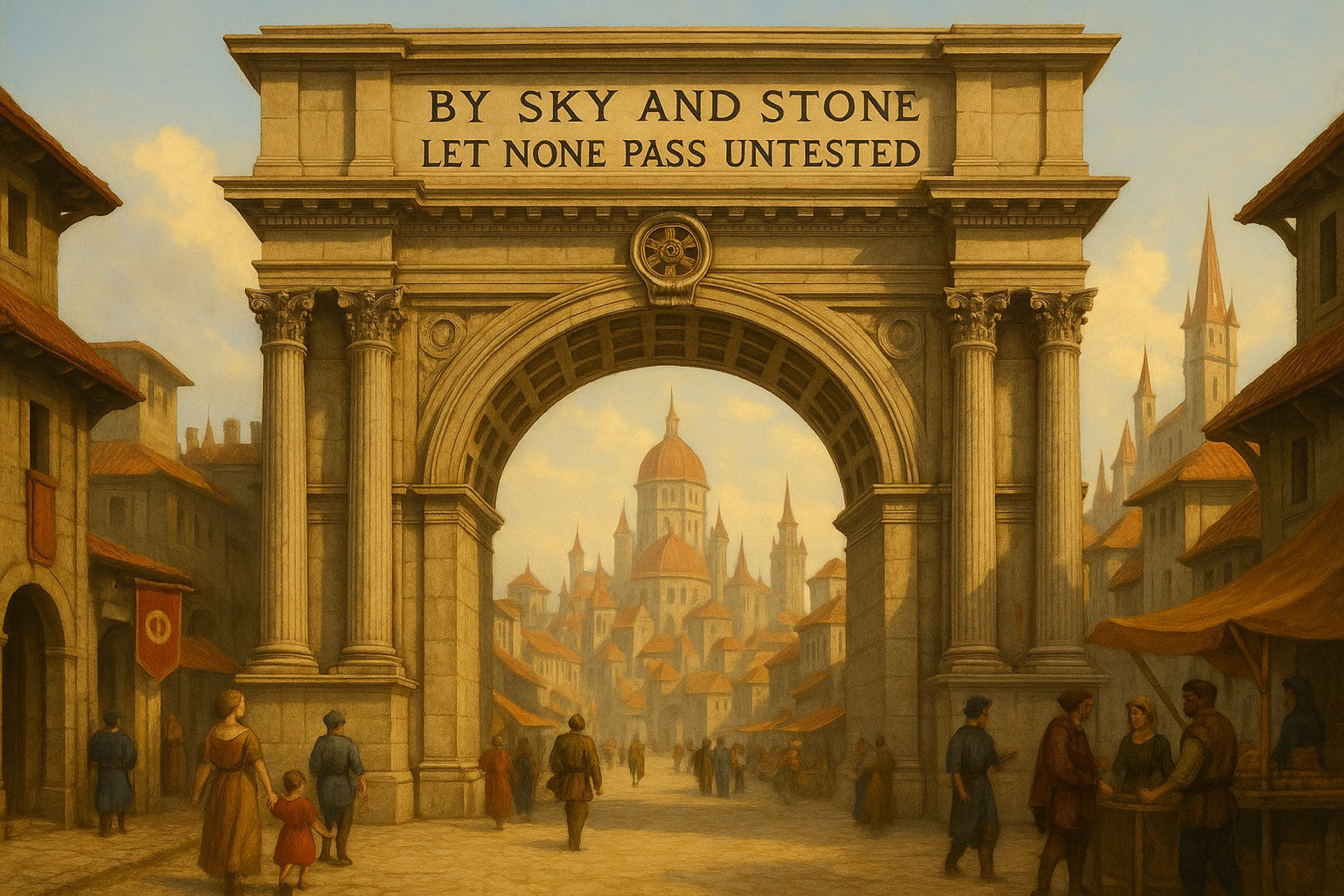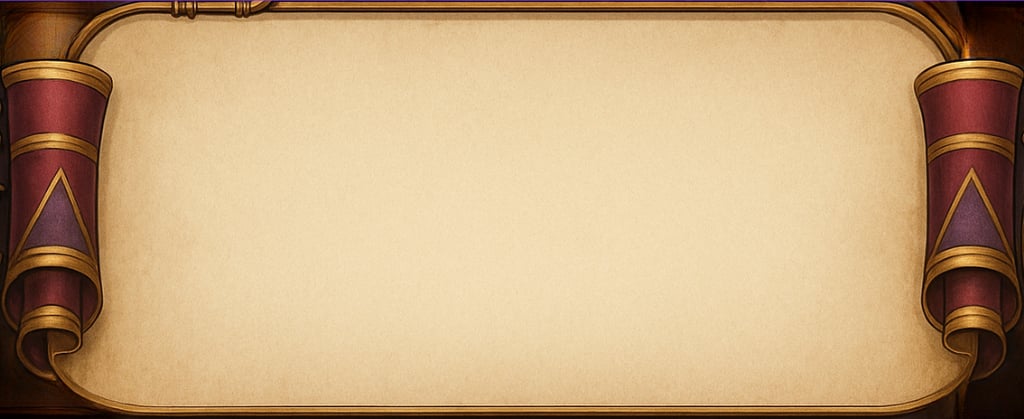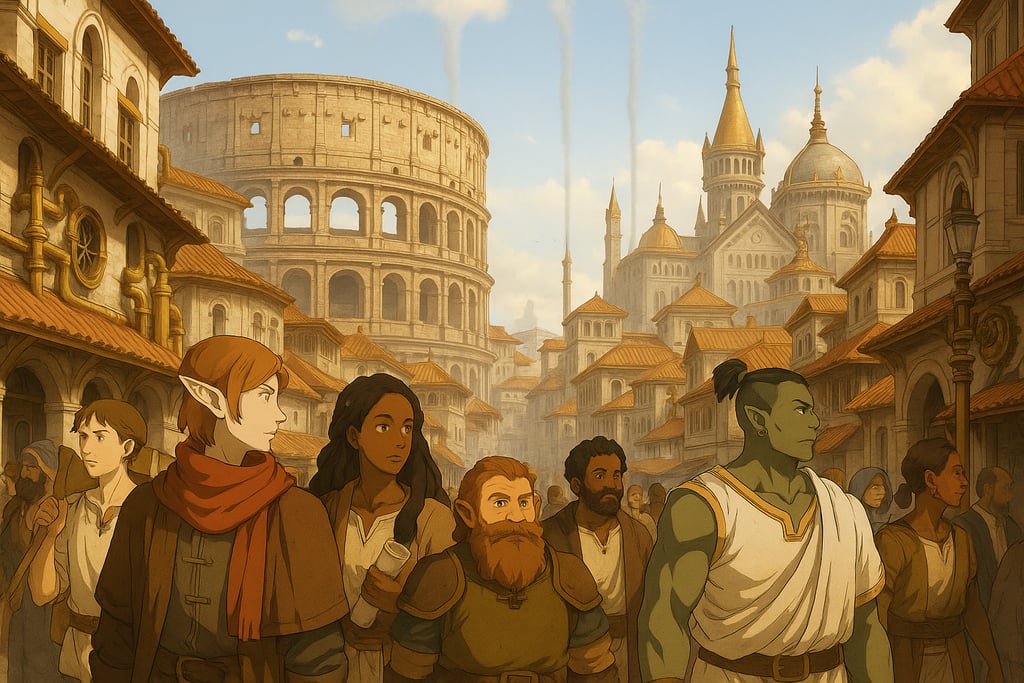
Gomatian Republic



Towering over the Midlands of Caelithar in both might and influence, the Gomantian Republic is a dominant force — a steampunk empire in all but name. Its legions, disciplined and mechanized, are among the most formidable in the world. With the Kingdoms of Caledinia, Crestmont, Gladcolm, and the Republic of Awayhla bound as client states, Gomantia commands not only its own vast territory, but the combined resources, knowledge, and manpower of a continent-spanning alliance.
Technologically, Gomantia leads the world. Elemental stones mined from its resource rich islands in the Netheren Sea power a host of mechanical wonders: steam-lifted trams that scale cliffs, mechanized mounts resembling metallic stallions, skybound airships that dot the heavens, and sentry automatons that patrol city gates with tireless vigilance. These marvels are sustained by the Republic’s unmatched infrastructure — and by the brilliance housed within the University of Magica, the largest and most prestigious arcane-mechanical institution in the Midlands.
Yet beneath this shining surface, unrest brews. Trade to the south has been choked by the Carishian Empire, raising tensions to the brink of war. While Consul Varenius Solari delicately negotiates with the Carishian Emperor, the people whisper of armies massing in secret. Meanwhile, the unpopular campaign in the Gaillands, led by High General Cassivar, drains morale and coffers alike. Co-consul Pomellian, once adored, now struggles to maintain order, even as opportunists in the Senate eye a return to lost power.
Whispers from the University suggest a breakthrough — a new device said to harmonize multiple elemental stones at once. If true, it could elevate Gomantia to an era of unchallenged dominance or plunge it into another age of war.



Gomatian History

Long before the Cataclysm fractured the divine order, the lands of central Caelithar were a tapestry of independent tribes, caught in cycles of feuds, famine, and fragmented faith. It was during this age of discord that Solan Varenthos, a formidable war-matriarch of the Velgari people, emerged as a force of unity. Wise, iron-willed, and guided by visions of elemental balance, Solan led not through brute strength alone, but through diplomacy, innovation, and reverence for the gods — especially Thalorion, deity of stone and stability.
Under her leadership, the matriarchal Velgari rose as the nucleus of what would become the Gomantian Republic. Solan brokered alliances with rival clans, offering not domination, but order, representation, and shared prosperity. She founded the Senate of Elders and Artisans, where leaders — predominantly women — governed by merit and divine counsel. Central to this new republic was the principle that mortal ingenuity must serve the will of the gods, and that no power, arcane or military, should be untempered by wisdom.
The founding of Gomantia City, carved into the twin hills of the River Thellos, was sanctified by the discovery of a major elemental stone vein. The Velgari were the first to see these stones not just as sacred icons, but as conduits of real power. Combining fire and water stones, Gomantian artisans engineered the world’s first steam-powered devices — lifting engines, forge-presses, and rudimentary automata.
This innovation became their salvation when invaders from the Netheren Islands struck the coast with volcanic iron and war-beasts bred from sea serpents. Solan’s engineers and priest-smiths created new war machines: steam-pikes, gear-propelled battering rams, and defensive cannons fed by elemental pressure chambers. These inventions turned the tide, and under Solan’s banner, the invaders were driven back into the sea.
Victory sealed Gomantia’s rise. Its reputation as a civilization of both discipline and divine innovation spread across the continent. The blending of matriarchal governance, arcane science, and mechanical prowess gave birth to a republic unlike any other — a society where steam and stone, goddess and gear, formed the foundation of greatness.
Solan Varenthos died as she lived — a leader enshrined in stone and story. Her tomb lies beneath the Senate Dome of Gomantia City, inscribed with the words: “Order from flame. Wisdom from stone. Peace, not in silence — but in strength.”
Ancient Era Rise of the Republic

Following the death of Solan Varenthos, the Gomantian Republic entered a period of transition and ambition. With its founding matriarch entombed beneath the Senate Dome and her vision enshrined in law, a new generation of leaders emerged, shifting the republic’s focus from survival to supremacy. Trade routes flourished across the Netheren Ocean, and Gomantia, confident in its mechanical ingenuity and arcane infrastructure, saw itself not just as a republic — but as a civilizing force.
For a time, this confidence seemed justified. The maritime expansion continued, with the Netheren Islands falling one by one to Gomantian control. Native populations were subjugated, displaced, or assimilated, and their rich elemental stone deposits stripped to feed the engines of Gomantia’s growing cities. The republic became the beating heart of Caelithar’s economy, culture, and magical innovation — but arrogance grew in tandem.
Only two decades after Solan’s death, the island tribes of the Netheren — hardened by displacement and united under a blood-bound war pact — launched a second, brutal invasion. Gomantia, grown complacent and under-militarized, was caught off guard. The invaders reached the gates of Gomantia City, laying siege to the capital. It was a moment of near-collapse.
In the crucible of that siege, three military leaders emerged: Cassia Merroth, Darnus Kalvo, and Ilira Saen — commanders from different provinces, united by desperation and resolve. Through bold tactics, secret steam-routed countermeasures, and elemental sabotage, they broke the siege. Over the following decade, their campaign reclaimed every inch of lost territory. The Senate, shaken by the near-annihilation of the state, enacted a radical reform: the creation of the Three Consuls, each empowered to lead the republic in times of crisis and balance one another’s influence in peace.
For the next thirty years, driven by fear of another invasion, the Senate elected consuls with increasingly militaristic aims. The campaign against the Netheren tribes became a war of retribution. The islands were conquered in full, their cultures broken and absorbed, their survivors relocated or enslaved. The republic’s army — battle-tested, hardened, and flush with elemental weapons — was now poised for continental conquest.
Wars with Awayhla and Gladcolm soon followed, bringing both states to heel as client nations. But during the final years of those campaigns, Caledinia, a rising coastal kingdom to the south, launched a surprise invasion, claiming key territories while Gomantia’s legions were stretched thin. The resulting war lasted six years and ended in a fragile peace treaty — but the wounds did not heal.
For the next two decades, skirmishes and proxy conflicts flared across border regions. Then came the flashpoint: a border raid by Caledinian rebels resulted in the death of a Gomatian consul’s daughter. Outrage swept the Senate. War was declared. The Second Caledinian War lasted eleven bitter years and ended in Caledinia’s unconditional surrender. It was formally integrated as a client state, its royal family left as symbolic governors under Gomatian supervision, with the sons and daughters of the royal family brought to the City of Gomantia as hostages.
The Netheren campaigns

At the peak of its reach and power, the Gomantian Republic was unprepared for the Cataclysm. When Vaeloras, the god of souls, was destroyed by forbidden magical, the world itself broke open. The Cataclysm sundered the lands, awakened long-dormant Kiaju, and tore open the skies. Mountains split, oceans surged, and entire continents crumbled at their edges. The heavily mined Netheren Islands — once the Republic’s jewel of resource extraction — fractured violently. While many were swallowed by lava or shattered into drifting, molten archipelagos, others, held aloft by unstable Aerane stone cores, still hover, mined now only at great risk.
The worst of the Cataclysm, however, came not from fire or water, but from the sky itself. Ash, smoke, and elemental corruption choked the heavens, plunging Caelithar into a creeping darkness that threatened to suffocate all life. In this time of crisis, Gomantia and the University of Magica played a decisive role. Fusing elemental engineering with divine theory, they developed atmospheric purifiers powered by soul-tuned stone arrays — vast machines that pierced the smog and slowly cleansed the skies. Though many nations contributed to this salvation, Gomantian leaders proudly — and loudly — frame their republic as the savior of the world.
In the political chaos that followed, Caledinia and Gladcolm, emboldened by Gomantia’s temporary weakness, rose in rebellion and successfully cast off the yoke of clienthood. Their independence, however, was short-lived. Within fifty years, renewed campaigns and diplomatic pressure brought both back under Gomatian control. Their leaders were displaced or absorbed, and loyalist governments installed under close Senate supervision.
To the east, the republic sought further expansion. War erupted with Jourish, a proud and isolated kingdom known for its elemental artistry and the skyreed forests that produce the light but durable wood used in airships. The Gomatian legions, despite superior technology, were repelled by the region’s terrain and tenacious defenders. Though the campaign failed to annex the land, Jourish agreed to send an annual tribute of skywood, preserving its sovereignty in name but acknowledging Gomatian dominance.
A decade later, the Kingdom of Crestmont fell under siege. Positioned at a critical junction of highland trade routes, Crestmont’s control of the mountain passes had long frustrated Gomatian ambitions. After a swift and brutal campaign, Gomantia annexed the territory outright, tightening its grip on regional commerce and further consolidating its hold over the Midlands of Caelithar.
Despite its post-Cataclysm losses, the Republic had not only recovered — it had evolved. The sky-cleansing victory became a mythic pillar of national identity. A new generation of consuls rose, promising stability, strength, and technological glory. Yet beneath the soaring towers and gleaming airships, tensions simmered — among subjugated peoples, rival states, and even the Senate itself.
The world had broken, but Gomantia had survived — reforged not in peace, but in purpose.
